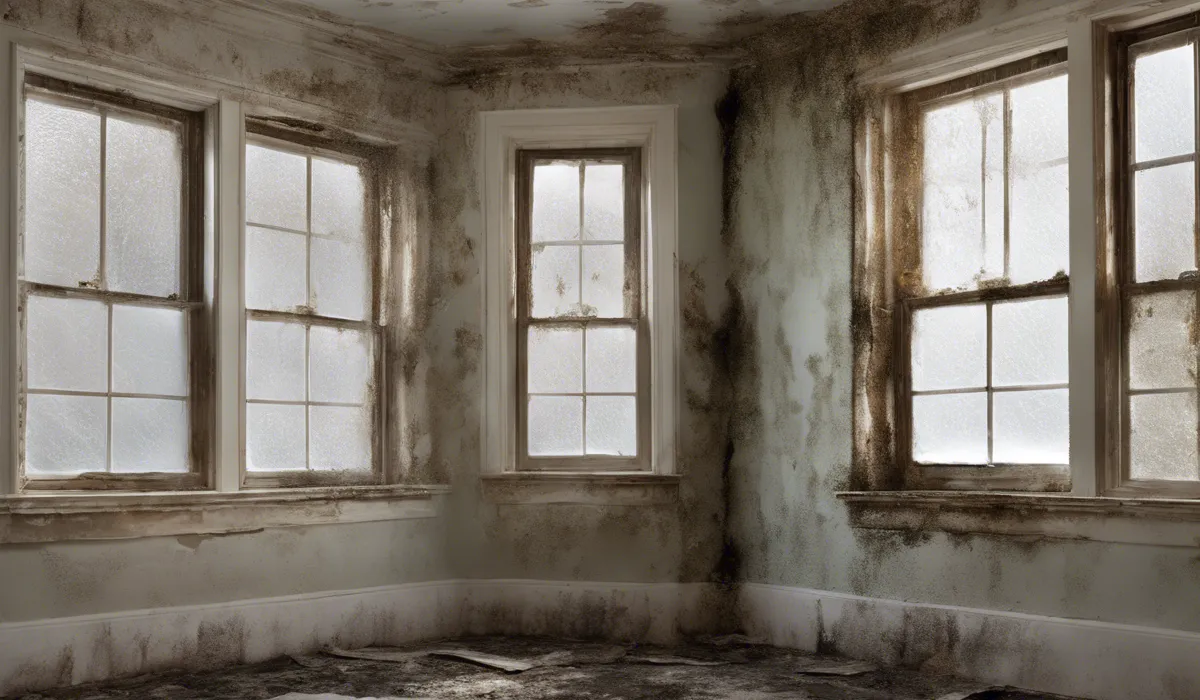To prevent mold on windows, ensure good ventilation, use a dehumidifier to reduce moisture, regularly clean window sills and tracks, and apply mold-resistant paint or sealant to window frames.
Understanding Mold on Windows

What Is Mold?
Mold is a type of fungus that can grow almost anywhere there is moisture. It comes in various colors, like black, white, green, or red.
Mold grows from tiny spores that float around in the air. When these spores land on wet surfaces, they start to grow into the fuzzy or slimy patches we know as mold.
Reasons for Mold on Windows
Windows are common places for mold because they often get wet from condensation or leaks.
The main reasons mold grows on windows include high humidity in the home, poor ventilation, and water that collects on window sills or tracks. If the water stays there, mold can start to grow.
Health Risks of Mold
Mold can be harmful to our health. Breathing in mold can cause coughing, sneezing, and sore throats, especially for people with allergies or asthma.
Some molds can even cause serious infections in people with weak immune systems. It’s important to keep mold away to stay healthy.
Detecting Mold on Windows
You can often see or smell mold. Look for spots or streaks that are different colors on your windows, window sills, or nearby walls.
Mold can also smell musty or earthy. If you notice any of these signs, it’s a good idea to check for mold and clean it up quickly.
Preventive Measures

Control Indoor Humidity
Keeping the air in your home dry is key to stopping mold. Try to keep humidity levels between 30% and 50%.
You can use a tool called a hygrometer to check the humidity. A dehumidifier can help reduce moisture in the air. Also, make sure to fix any leaks in your home right away.
Improve Ventilation and Airflow
Fresh air helps keep mold away. Open windows when you can to let air in. Use fans and vents, especially in places like bathrooms and kitchens where there’s a lot of moisture. Moving the air helps dry out damp spots where mold likes to grow.
Clean Windows Regularly
Cleaning your windows often can stop mold from growing. Wipe down window sills and tracks to remove any water or dirt.
This stops mold from having a place to grow. Use a simple mix of soap and water to clean, and dry the areas well after.
Use Mold-Resistant Products
There are special paints and treatments for windows that resist mold. These can be a good choice for areas that get wet often.
When you paint or seal your windows, look for products that say “mold-resistant.” This can give you extra protection against mold.
Insulate Windows
When windows are cold, moisture in the air can turn into water on the glass. This is called condensation.
Insulating your windows helps keep them warm, so condensation doesn’t happen. You can use things like double-paned windows or insulating curtains to help.
Remediation Strategies

Safe Mold Removal Steps
If you find mold on your windows, it’s important to clean it up safely. Wear gloves and a mask to protect yourself.
Mix water with a little bit of bleach or use vinegar to clean the mold. Scrub gently, then rinse and dry the area well. Make sure to throw away any cloths or sponges you used.
Selecting Cleaners and Tools
Choosing the right cleaner is important. Natural options like vinegar or baking soda can work well and are safe for most people.
If you need something stronger, look for mold-killing cleaners at the store. Always read the instructions and use the cleaner as directed.
When to Call a Pro?
If the mold is big or keeps coming back, it might be time to call a professional. Pros have special tools and know-how to get rid of mold safely.
They can also help find out why the mold is growing and how to stop it from coming back.
Ongoing Mold Monitoring
After you clean up mold, keep an eye on the area to make sure it doesn’t come back. Check your windows often, especially after it rains or when there’s a lot of moisture in the air.
By staying alert, you can catch mold early and stop it from growing again.
FAQs About Preventing Mold on Windows
How can I ensure good ventilation to prevent mold on my windows?
Ensure good ventilation by regularly opening windows, using exhaust fans in rooms like kitchens and bathrooms, and considering cross-ventilation by opening opposite windows to create a breeze.
What type of dehumidifier should I use to reduce moisture and prevent mold on windows?
Use a dehumidifier that is appropriately sized for the room to effectively reduce indoor humidity levels, thus helping to prevent mold growth on window surfaces.
How often should I clean my window sills and tracks to prevent mold?
Regularly clean window sills and tracks at least once a month or more frequently if you notice condensation or dirt accumulation that could promote mold growth.
Can mold-resistant paint or sealant be applied to all types of window frames?
Mold-resistant paint or sealant can be applied to most types of window frames, but it’s important to choose a product that is compatible with the material of your frames.
Is there a specific cleaning solution recommended for preventing mold on window sills?
For preventing mold, use a cleaning solution made of water and white vinegar, or a commercially available mold-killing product, ensuring it’s safe for the window material.
Final Thoughts
Maintaining proper ventilation, utilizing dehumidifiers, regularly cleaning window areas, and applying mold-resistant materials are critical steps to preventing mold growth on windows.
These measures tackle the issue by controlling moisture levels and eliminating the conditions favorable for mold development.
